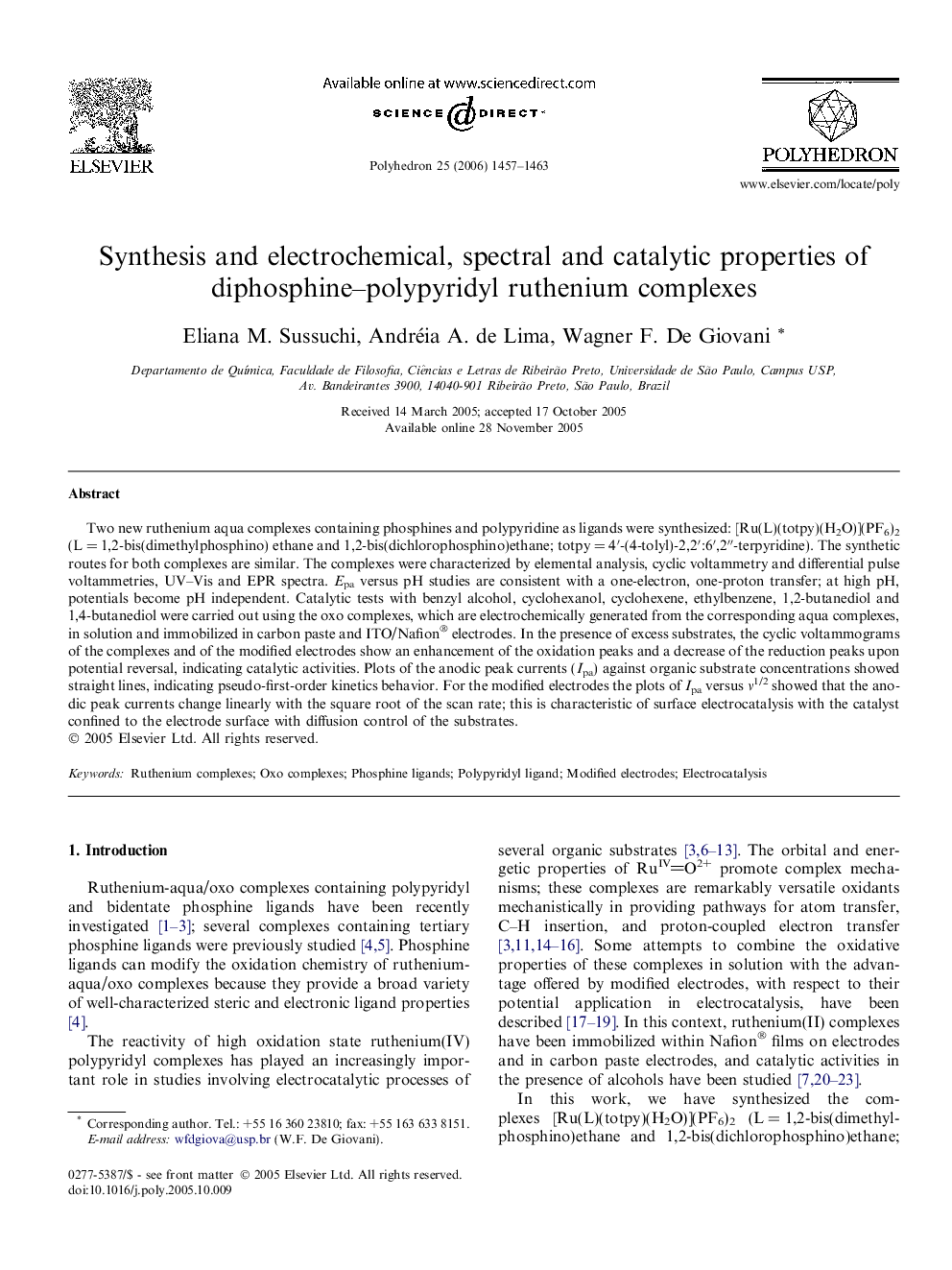| کد مقاله | کد نشریه | سال انتشار | مقاله انگلیسی | نسخه تمام متن |
|---|---|---|---|---|
| 1335778 | 979551 | 2006 | 7 صفحه PDF | دانلود رایگان |

Two new ruthenium aqua complexes containing phosphines and polypyridine as ligands were synthesized: [Ru(L)(totpy)(H2O)](PF6)2 (L = 1,2-bis(dimethylphosphino) ethane and 1,2-bis(dichlorophosphino)ethane; totpy = 4′-(4-tolyl)-2,2′:6′,2″-terpyridine). The synthetic routes for both complexes are similar. The complexes were characterized by elemental analysis, cyclic voltammetry and differential pulse voltammetries, UV–Vis and EPR spectra. Epa versus pH studies are consistent with a one-electron, one-proton transfer; at high pH, potentials become pH independent. Catalytic tests with benzyl alcohol, cyclohexanol, cyclohexene, ethylbenzene, 1,2-butanediol and 1,4-butanediol were carried out using the oxo complexes, which are electrochemically generated from the corresponding aqua complexes, in solution and immobilized in carbon paste and ITO/Nafion® electrodes. In the presence of excess substrates, the cyclic voltammograms of the complexes and of the modified electrodes show an enhancement of the oxidation peaks and a decrease of the reduction peaks upon potential reversal, indicating catalytic activities. Plots of the anodic peak currents (Ipa) against organic substrate concentrations showed straight lines, indicating pseudo-first-order kinetics behavior. For the modified electrodes the plots of Ipa versus ν1/2 showed that the anodic peak currents change linearly with the square root of the scan rate; this is characteristic of surface electrocatalysis with the catalyst confined to the electrode surface with diffusion control of the substrates.
The complexes [Ru(L)(totpy)(H2O)](PF6)2 (L = 1,2-bis(dimethylphosphino)ethane and 1,2-bis(dichlorophosphino)ethane; totpy = 4′-(4-tolyl)-2,2′:6′,2″-terpyridine) were synthesized. Their electrochemical behaviour in function of pH was studied. The complexes were used as catalysts in electrochemical oxidations of benzyl alcohol, cyclohexanol, cyclohexene, ethylbenzene, 1,2-butanediol and 1,4-butanediol, in solution and immobilized in carbon paste and ITO/Nafion® electrodes.Figure optionsDownload as PowerPoint slide
Journal: Polyhedron - Volume 25, Issue 6, 17 April 2006, Pages 1457–1463